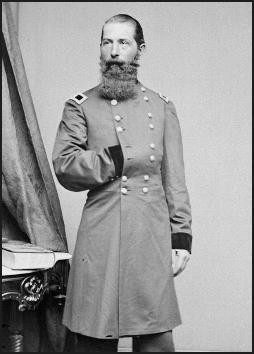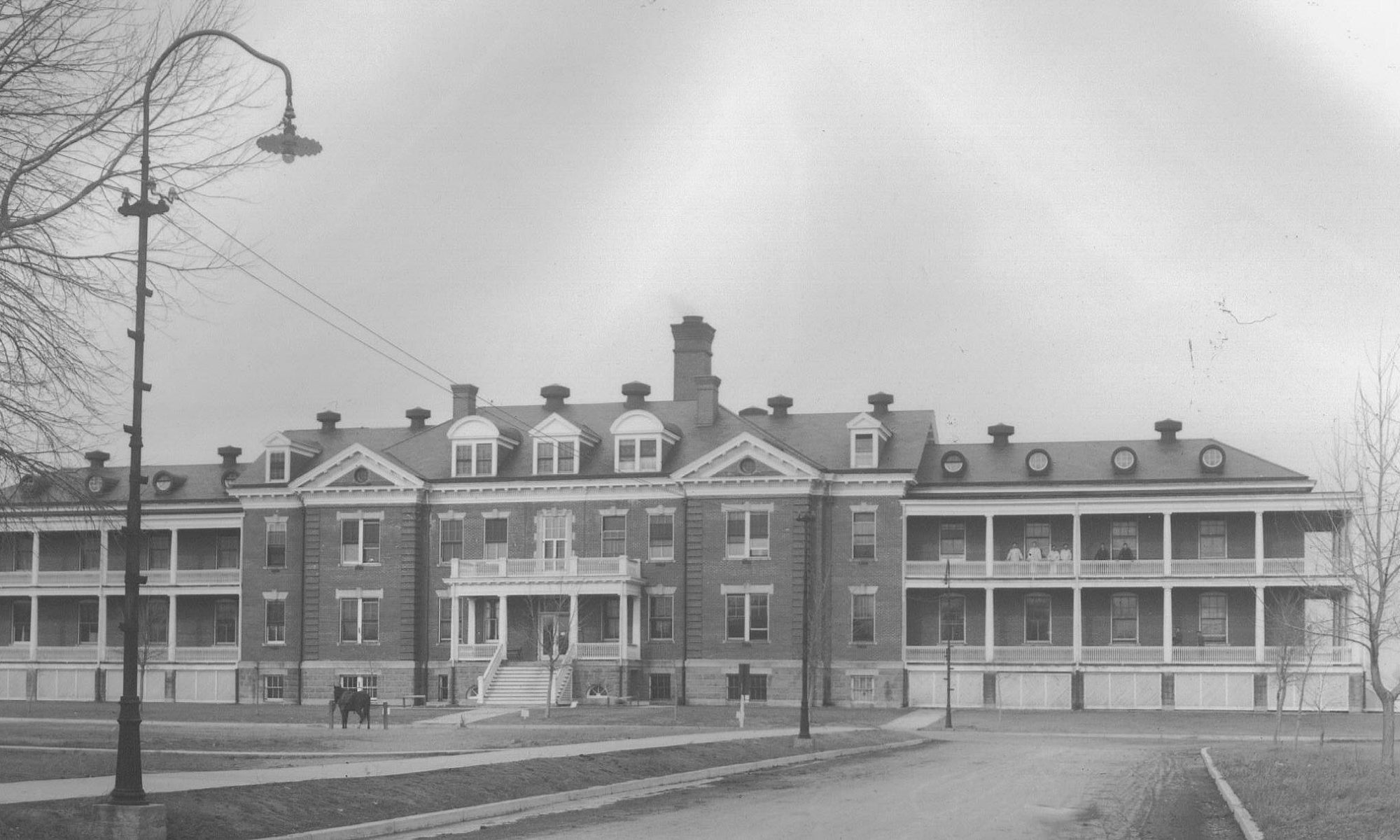September 8, 1867
The summer months in 1867 led to the establishment of a new army post near Cheyenne. Founded by Colonel John D. Stevenson and the Thirtieth Infantry Regiment, the new, but unnamed, fort would provide pivotal protection for the development of the transcontinental railroad, as well as the town of Cheyenne. By fall, construction of the officers’ quarters and enlisted barracks had begun, and the socioeconomic benefits of the military installation began to reshape the local community. However, while the establishment and construction of Cheyenne’s new base began in the summer months, the fort was not formally named until September, almost two months after Col. Stevenson arrived at Crow Creek. On July 31, 1867, the Department of the Platte issued the order to name the new installation Fort D. A. Russell, after Army Brigadier General David Allen Russell. The order went into effect and the post was formally named on September 8, 1867.

General Russell’s service history undoubtedly shows why the U. S. Army chose to name the new fort after him. David Russell was born in Salem, New York on December 10, 1820. He began his military career at twenty-years old when he entered The United States Military Academy, more commonly known as West Point, on July 1, 1841. According to historian Mike Byrd, Russell struggled throughout his studies. However, while his grades in traditional subjects (math, science, English) were quite poor, he excelled at military tactics and techniques. After four years of schooling, Russell graduated from the academy. From 1845 to 1846, the new Second Lieutenant served at Fort Scott in the Indian Territory. He was later reassigned to Texas, Mexico to support the Mexican-American War, during which he was taken prisoner twice. He later received citations for valor and meritorious conduct for his service during the war. From 1850 to 1861 he served in the Washington Territory, where he was promoted to Captain in 1854. The onset of civil war in the United States led to his reassignment back east in 1862.
By December 1862, Russell was promoted from Captain to Brigadier General. Shortly after the war began, Captain Russell received the rank of Colonel and was appointed Commander of the Seventh Massachusetts Volunteer Infantry in the Spring of 1862. His heroism at the Battles of Williamsburg (May 1862) and Antietam (September 1862), in combination with his distinguished leadership, led to his promotion to Brigadier General and his assumption of command of the Third Brigade of the First Division. General Russell fought in the Battles of Gettysburg (July 1863), Wilderness (May 1864), and Opequon, also referred to as the Third Battle of Winchester (September 1864). According to the official dispatch, General Russell was struck by a cannon ball at the Battle of Opequon while leading an advance. The munition threw him from his horse and mortally wounded him. The death of Russell significantly impacted the morale of his troops. According to George T. Stevens, surgeon for the Seventy-Seventh Regiment of New York Volunteers, “many tears moistened the brown cheeks of rough soldiers as they thought of the loss of one of our best beloved leaders.” Russell was not only a significant force on the battlefield, but also to his troops, who considered him a brave and caring commander who led by example. In addition to his previous citations for gallantry and meritorious service at the Battles of Gettysburg and Williamsburg, General Russell was posthumously cited for distinguished gallantry for his actions during the Battle of Opequon.
As the new post in the West emerged, the U. S. Army sought to recognize the meritorious service of David A. Russell. The Department of the Platte formalized the hero’s legacy with General Order No. 33, which stated, “The new military post to be established on Crow Creek, D[akota] T[erritory], at its intersection by the Union Pacific Railroad, is named Fort D. A. Russell, after Brigadier General David A. Russell, U. S. Volunteers, Major 8th U. S. Infantry, who was killed at the battle of Winchester, September 19, 1864.” Thus, the prestigious legacy of Fort D. A. Russell, and, later, F. E. Warren Air Force Base was established at the very beginning, when the U. S. Army decided to name the post near Cheyenne in honor of one of the Civil War’s greatest leaders.
In addition to having a military installation named in honor of him, the Sedgwick Memorial Association erected a granite monument in the memory of General Russell on September 19, 1891 in the National Cemetery. Furthermore, Fort Stevens, in Hammond, Oregon, named a gun battery to honor Russell on December 27, 1904. Thus, while Fort D. A. Russell was renamed Fort F. E. Warren in 1930, the story of Brigadier General David Allen Russell and his heroic actions before and during the Civil War live on.
